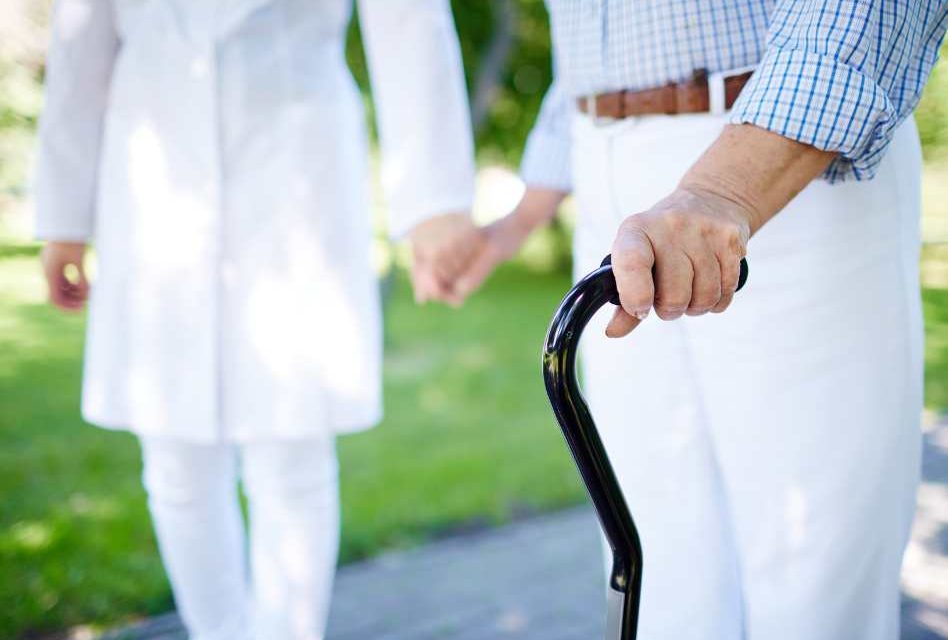Christine Davidson, PT, DPT
Physical Therapy
Orlando Health
As you grow older, a fear of falling can significantly hamper your ability to get the most out of life. It’s a valid concern. Falls are the leading cause of injury-related death for adults over the age of 65, and a recent study suggests the number of fall-related deaths has doubled in the past 20 years.
But falling is not a normal part of aging, and there are ways you can lower your risk of taking a tumble.
Balance is comprised of three systems that work together to keep you upright: your inner ear, your vision, and your muscles and joints. Each of these systems can be affected by health problems and medicines designed to control them. For example, some medications used to lower blood pressure can make you feel dizzy. Likewise, declining vision can increase your risk of missteps.
It’s good to be aware of side effects of any medications your medical provider has prescribed. You should also stay active and exercise to boost your muscles and joints as well as give you the strength needed to keep your balance if you falter. Keeping your home free of clutter can help avoid vision-related stumbles.
Let’s take a look at what you can do on your own or with the help of a physical therapist.
Make Your Home Safer
There are many things you can do at home to create a safer living environment. Among them:
- Keep walkways free of cords and clutter
- Secure or remove any loose mats or throw rugs
- Install non-slip surfaces in your shower and bathroom
- If there are steps into your home, make sure there is a rail
- Install nightlights along walkways and dark spaces
- Keep regularly used kitchen items within arm’s reach
- Install grab bars near the toilet or in the shower area
- Wear well-fitting slippers and shoes around the house
Focus on Balance
Generally speaking, all exercise is good exercise. But when the goal is to reduce the risk of falling, your efforts should be targeted to activities that will preserve or improve your balance. Riding a stationary bike may be good for cardio and endurance, but it won’t keep you upright when walking in dimly lit spaces or on uneven surfaces.
You should talk to your doctor or physical therapist before doing any exercises, but here are a couple that can boost your balance skills:
Sit to stand: This exercise works on leg strength, while improving balance and mechanics. Start by sitting in a chair that doesn’t slide or roll. Your feet should be flat on the ground and there should be a sturdy surface (a desk or table, for example) in front of you for support, if needed.
Next, slide forward to the edge of the chair and slowly stand. Then slowly sit back down, repeating the exercise 10 times. The goal is to not use your hands – unless you start to lose your balance. For added difficulty, you can hold hand weights.
Standing balance: This exercise helps you prepare for being in the dark, like when you get up at night to go to the bathroom. Start by standing in a corner (without touching the walls) with a chair in front of you for support, if needed. With your feet shoulder-width apart, close your eyes for 30 seconds.
You can increase the difficulty of this exercise with several variations: Put your feet together with a narrow base of support keeping your eyes open, and once you are balanced, close your eyes. Another option to increase difficulty is using a staggered stance, with one foot in front of the other like you were standing on a balance beam while keeping your eyes open. Most difficulty is to stand on one leg!
When To Seek Help
When is it time to get help? There are several things that might spark a visit, including a previous fall or feeling dizzy when changing positions or after walking for a while. You might also seek help if your fear of falling is limiting your movements or the types of activities you feel comfortable doing. Your primary care doctor might also suggest a visit if you’ve reported “near misses” – brief stumbles that could have been much worse.
A physical therapist can take a close look at your unique situation and help you develop a game plan – including exercises – for reducing risk. This starts with a thorough exploration of your strength, balance and vision skills. Your therapist will look at your medications and any health problems you might have to see if they have any impact on your fall risk. They’ll also explore your home environment – through a home visit or virtual tour – to minimize risks there.
Source: Orlando Health, www.orlandohealth.com


















